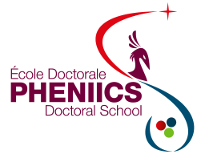Orateur
M.
Pierre Favier
(Laboratoire de l'Accelerateur Lineaire)
Description
Inverse Compton Scattering provides a unique way to produce quasi-monochromatic X-rays via the interaction of relativistic electrons with a laser pulse. This process has the advantage of producing a very high flux of X-rays with energies above a few tens of keV for a modest electron beam energy. In addition the output beam divergence is much larger than in classical synchrotron light sources and the X-ray beam is thus easier to manipulate. We present an X-ray source under construction at Paris-Sud University, ThomX. This source has a small footprint of 70m² compared to synchrotron light sources and uses a 50 MeV electron beam that collides at 16.7 MHz with a few picosecond pulsed laser beam which power is enhanced at the state of the art. In the nominal design the enhanced average laser-beam power is 600 kW and X-rays between 30 and 50 keV are produced with a flux of 1013 photons per second. This energy range as well as the energy-angular dependence due to the Compton back-scattering process are suitable for societal applications like radiotherapy or art history.
We use a prototype cavity to perform R&D for the ThomX source. Various diagnostics like real time finesse measurements or active coupling enhancement are under study on this test cavity to increase the achievable stored power. We will present the ongoing developments along with the results we obtained. A very high finesse optical cavity (F > 28 000) is used, which is one of the highest finesse cavities in pulsed regime. The numerous challenges and solutions to mitigate the related issues will be presented.
Auteur principal
M.
Pierre Favier
(Laboratoire de l'Accelerateur Lineaire)



